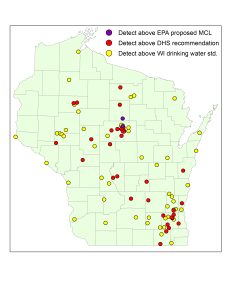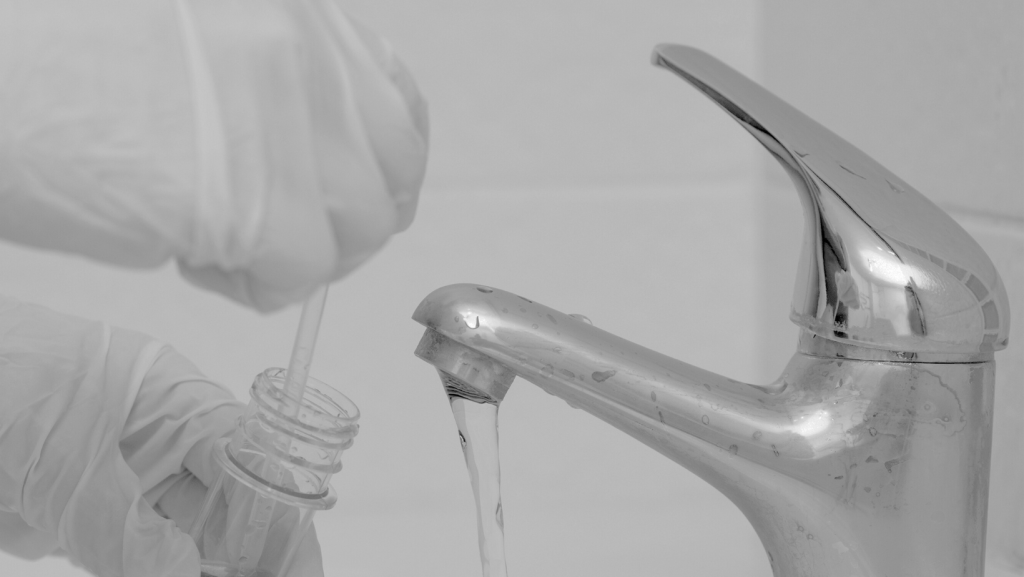By Paul Mathewson, Science Program Director and Julia Kloiber, Spring Research Intern
Awareness and concern about PFAS contamination has exploded in the past few years. Surveys conducted by Marquette University found that 60% of respondents expressed concern about PFAS contamination in their drinking water, with consistent levels of concern reported around the state.
This raises an important question: what is the extent of PFAS contamination in the state’s drinking water? This column looks at two sources of information to provide some insight into that question.
The 2022 rules establishing drinking water standards for two PFAS compounds contained a provision that most types of public water systems test for PFAS by the end of 2023. We analyzed all the test results that have been submitted as of February 1, 2024, and found that while detections of PFAS are widespread, only a few systems had PFAS levels above the proposed EPA health-based standards.
- PFAS detected in 30% of systems
- PFAS detected in systems in 70 of 71 counties with public system tests
- PFAS detected above EPA proposed Maximum Contaminant Levels (MCL) in 5% of systems and above DHS recommended standards in 2% of systems.
Note that these numbers do not reflect systems like Wausau that had detected and addressed PFAS-contaminated supply wells prior the rule being enacted.
Private well water quality testing is largely unregulated in Wisconsin, with no requirements for PFAS testing. To help fill this gap for the approximately 1/3 of residents getting water from private wells, the Wisconsin DNR conducted a random survey of 450 shallow groundwater private wells across the state.
Similar to the public system data, PFAS detections are widespread but contamination above proposed health-based standards is rare:
- PFAS detected in 71% of wells
- PFAS contamination above proposed EPA MCL in 4% of wells and above the DHS recommended standards for 1% of wells.

The testing to date provides a good starting point for understanding the extent of PFAS contamination of drinking water supplies in WI. The good news is that significant contamination at levels warranting serious public health concern are relatively rare. However, rare does not mean non-existent and PFAS has been found above health-based standards in both public water systems and private wells.
In addition to providing a snapshot of PFAS contamination around the state, these initial testing results can provide insight into priorities for both immediate remediation and future additional research.
For example, ten of the public systems with elevated PFAS contamination (defined here as more than 10 ppt PFOA+PFOS) are schools and daycare facilities. Young children are particularly vulnerable to toxic effects of PFAS due to their rapidly growing and developing bodies, and thus these facilities represent a remediation priority.
Similarly, some of the private wells with particularly high levels of PFAS contamination were in areas dominated by agricultural land. This indicates the need to better understand the potential of landspreading PFAS-contaminated materials leading to concentrated hotspots of acute contamination.

